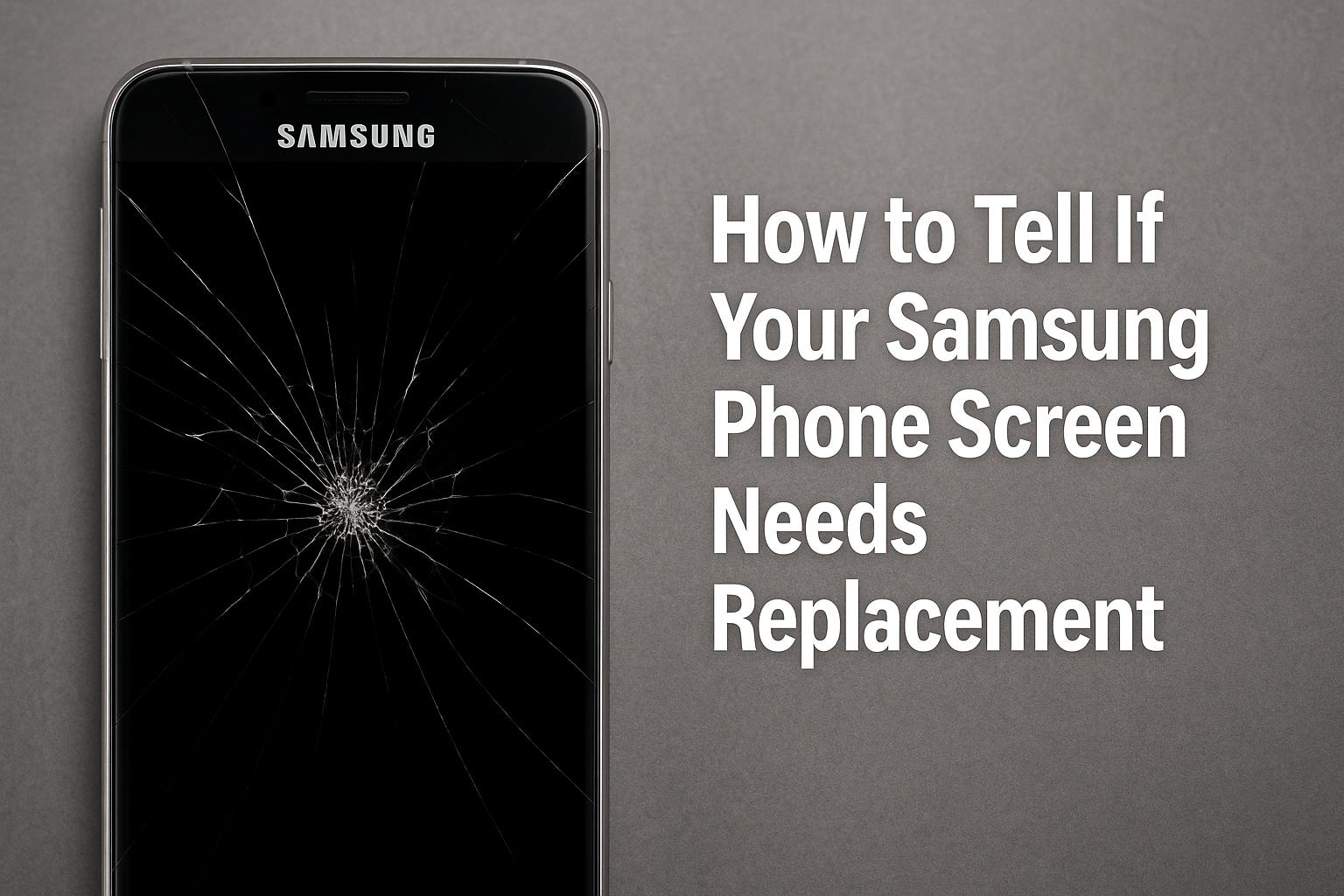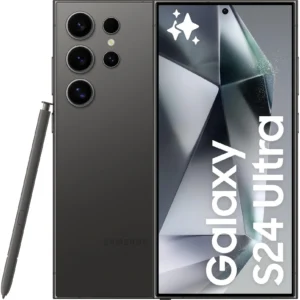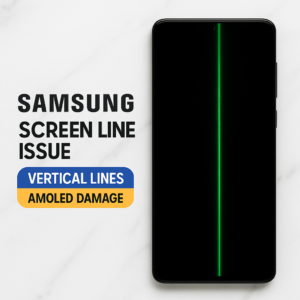Your Samsung phone’s screen is one of its most important components. It’s where you view content, interact with apps, and enjoy the device’s stunning AMOLED or Dynamic AMOLED display. Whether you own the latest Samsung Galaxy S24 Ultra, a Z Fold model, or a budget-friendly A Series device, your screen combines precision engineering with advanced display technology.
Unfortunately, even the most durable Samsung screens are not immune to damage. A cracked or faulty screen can make your phone harder to use — and if ignored, the problem can worsen, leading to more costly repairs.
In this detailed guide, we’ll show you the clear signs your Samsung screen needs replacement, why professional Samsung screen repair is the safest choice, and tips to protect your new display for years to come.
1. Visible Cracks or Shattered Glass
The most obvious sign you need a screen replacement is a cracked or shattered display. While modern Samsung models use tough Gorilla Glass, no glass is truly “unbreakable.”
Cracks can start small — perhaps a hairline fracture in the corner — but over time, they can spread across the display. This not only ruins the look of your phone but can:
-
Affect water resistance
-
Make the touch screen less responsive
-
Cause tiny glass splinters, which are dangerous
Pro tip: If the glass is cracked but the display and touch are still working, you may be tempted to delay the repair. However, small cracks allow dust and moisture to enter, which can damage the internal display panel.
2. Touchscreen Problems
Your Samsung screen doesn’t just display images — it’s also the control surface. If the touch layer (digitiser) is damaged, you may experience:
-
Unresponsive touch areas – where swipes or taps don’t register
-
Ghost touches – when the screen reacts without you touching it
-
Lag – noticeable delay between your touch and the phone’s response
These issues can make your device frustrating to use. In many cases, replacing the screen resolves these problems entirely.
3. Display Malfunctions
Damage isn’t always visible on the glass surface — sometimes the internal AMOLED or LCD display is the part that fails. Look for:
-
Flickering – intermittent brightness changes or flashing
-
Dead pixels – tiny spots that remain black or discoloured
-
Coloured lines – horizontal or vertical stripes across the display
-
Black patches – areas where the display doesn’t light up at all
Such issues are almost always a sign of internal panel damage, and repairing them requires a full screen replacement.
4. Face Recognition or Fingerprint Scanner Issues
Many Samsung phones feature in-screen fingerprint sensors or facial recognition systems. A damaged screen can interfere with these features, even if the rest of the display looks fine.
If you notice your fingerprint scanner frequently fails to detect your finger or your face unlock isn’t working correctly, it could be due to screen damage — especially if it happened after a drop or impact.
5. Screen Lifting or Frame Separation
In some cases, the screen may start to lift away from the frame. This can happen because of:
-
Old or weakened adhesive
-
Battery swelling pushing the screen outward
-
Impact damage bending the frame
Once the screen is separated, dust and moisture can easily enter your phone, potentially damaging the motherboard or battery.
6. Signs of Water Damage
Even though many Samsung models are water-resistant, a cracked screen compromises this protection. If water gets inside the phone, it can damage the display and cause:
-
Foggy or hazy patches under the glass
-
Touchscreen unresponsiveness
-
Corrosion around the edges of the screen
If you suspect water damage, it’s important to have your phone inspected quickly to prevent further issues.
7. Why Professional Samsung Screen Repair is Essential
You might be wondering — can’t I just fix it myself? While DIY screen repair kits exist, Samsung screens are complex and require expert handling. Here’s why professional repairs are the better choice:
-
Specialised tools: Opening a Samsung device without the right tools can damage the frame or internal components.
-
Advanced display tech: Dynamic AMOLED and foldable displays are delicate and costly to replace.
-
Water resistance: Professionals reseal your device to maintain water resistance where possible.
-
Warranty protection: Many repair shops (including us) offer a 12-month warranty on parts and labour.
At iRepair Experts in Brisbane, our technicians are trained to repair the full Samsung range — from budget models to the latest flagship releases — using both premium aftermarket and genuine Samsung screens.
8. Samsung Screen Repair Costs in Brisbane
The cost of Samsung screen replacement varies depending on the model and the type of screen you choose:
-
Premium OLED or Dynamic AMOLED – Ideal for those who want near-original quality in brightness and colour.
-
Genuine Samsung screens – Perfect match for original performance and features.
-
Budget aftermarket screens – More affordable but may have slight differences in display performance.
For example, typical prices may start from:
-
Samsung Galaxy S24 Ultra: From $499
-
Samsung Galaxy Z Fold series: From $699
-
Samsung A series: From $149
(These are example figures — contact us for the latest prices.)
9. How We Replace Your Samsung Screen at iRepair Experts
When you bring your phone to our Brisbane store, here’s what happens:
-
Free Diagnosis – We inspect the phone to confirm if the issue is screen-related.
-
Part Selection – You choose between genuine or premium aftermarket screens.
-
Safe Disassembly – Using precision tools, we remove the damaged screen without harming the frame.
-
New Screen Installation – The new display is carefully fitted and sealed.
-
Testing – We check touch response, brightness, colour accuracy, and any in-screen sensors.
-
Warranty Issued – You leave with your phone working perfectly and a 12-month warranty.
10. Tips to Protect Your New Samsung Screen
After your screen is replaced, you’ll want to keep it looking and working like new for as long as possible. Here’s how:
-
Use a tempered glass protector – Reduces the risk of cracks and scratches.
-
Invest in a shockproof case – Protects against drops and corner impacts.
-
Avoid extreme temperatures – Heat can weaken screen adhesives.
-
Keep your phone separate from keys and coins – Prevents scratches and dents.





Leave a Reply